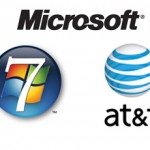 Barcelona, Spain — Adobe Systems, hard at work is preparing a mobile version of (AIR), on Monday announced making improvements to its popular Flash video player that promise to enhance the experience of watching video on a mobile, and said it would support Google’s Android phone platform.
Barcelona, Spain — Adobe Systems, hard at work is preparing a mobile version of (AIR), on Monday announced making improvements to its popular Flash video player that promise to enhance the experience of watching video on a mobile, and said it would support Google’s Android phone platform.
AIR, short for Adobe Integrated Runtime, whose Flash program enables most video viewed online and made YouTube possible, also said it believed Apple would eventually bow to market pressure and include Flash on the iPhone and the new iPad tablet computer.
Adobe plans to present a demo of AIR 2.0 running on a Google Android-based smartphone today at the Mobile Word Congress in Barcelona. Examples of AIR applications is evident in the New York Times Reader and the TweetDeck for advanced Twitter usage.

Adobe is pushing AIR applications such as Alchemist by InRuntime for smartphones, starting with Android later in 2010. (Credit: Adobe Systems)
Adobe plans to make AIR for Google’s Android operating system for mobile devices in 2010, as well as for RIM BlackBerry devices, and possibly for other platforms as well, said Adrian Ludwig, Adobe’s marketing director for the Flash platform.
Also at the show, Adobe announced that it has made alliance with the LiMo Foundation to deliver Flash to Linux-based mobile phones. AIR for mobile will use Flash Player 10.1, a beta version of which Adobe said was just released to partners and programmers.
Flash is omnipresent on computers but comparatively rare on mobile devices; AIR has not achieved Flash’s penetration even on desktops. But if Adobe can persuade mobile-phone makers to support it, or persuade phone owners to install it on their own, it could open up cross-platform advantages for programmers who want the same or similar versions of a program to run on different types of equipment.
David Wadhwani, who manages Adobe’s Platform business, said Adobe would continue to support both ways of distributing Flash. It has already published tools that offer developers a way to convert Flash applications into ones that work on the iPhone.
“We personally believe very strongly that open distribution will be the model that will prevail, but we are agnostic,” he said in a statement. “Ultimately, the consumer will decide.”
“We are operating with the vast majority of the schemes to make sure Flash is going to be successful,” Ludwig said. “We have got 19 of the top 20 OEM handset manufacturers committed to delivering Flash on their devices.”
The mobile version will enable users to access content they previously could not reach, Ludwig said. For instance, users will be able to share screens across systems using the Adobe Acrobat Connect online service via AIR on mobile systems. “Our goal is to provide a consistent runtime that spans devices, inclusive of [mobile and] desktop operating systems,” he said.
AIR 2.0 is currently in a beta release for Mac, Windows, and Linux desktops. Adobe expects AIR 2.0 will be generally available on desktops by July, and later on mobile devices. There will be no beta version of the mobile release.
“AIR makes applications more compatible between desktops and mobile, and that is a big asset,” said analyst Al Hilwa of IDC. “There is an opportunity here for products that can achieve some sort of critical mass across form factors, and Adobe is deftly going after that,” he said. Adobe, though, will need broad platform support to make that happen, he added.
Adobe has been competing to maintain pace with the growth of smartphones, netbooks and now tablet PCs, all with diverse specifications, and has built an alliance of industry leaders to work on making Web browsing consistent across devices. Since the launch of the iPad, Adobe has been under constant fire from Apple and from Apple-centric pundits such as Daniel Eran Dilger and John Gruber, who argue that Flash is a basically worthless technology that needs to be killed off.
Speaking from Adobe’s perspective, Ludwig turned the argument around: Apple is the only manufacturer in a big world of phones who does not want to adopt Adobe’s standard, he said.
Also at the show, Adobe demonstrated Flash 10.1 running on the Google Nexus One and Motorola Droid phones, playing video, running advertisements and playing the popular Farmville video game. In the demo, everything worked smoothly and as well as expected. Video in a 500 kilobit/second stream will generally play at 12-18 frames per second, Ludwig said. Flash 10.1 will run on phones with ARM Cortex-A8 or better processors and 50 Mbytes of available RAM, Ludwig said.
Flash 10.1 will be available for Android, Windows Mobile and Palm WebOS phones sometime in the first half of 2010. Ludwig said.


